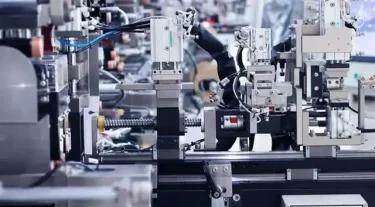Tape Production Process and Techniques

# Tape Production Process and Techniques
## Introduction to Tape Manufacturing
Tape manufacturing is a complex process that involves multiple stages to create adhesive products for various applications. From packaging tapes to medical adhesives, the production techniques have evolved significantly to meet diverse industry requirements.
## Raw Material Selection
The foundation of quality tape production lies in careful raw material selection:
– Backing materials (paper, plastic films, or cloth)
– Adhesive compounds (rubber-based, acrylic, or silicone)
– Release liners (for pressure-sensitive tapes)
– Additives (tackifiers, stabilizers, and fillers)
## The Tape Production Process
### 1. Backing Material Preparation
The process begins with preparing the backing material. Plastic films are extruded or cast, while paper backings undergo special treatments for strength and flexibility.
### 2. Adhesive Coating
There are several coating techniques used in tape manufacturing:
– Direct coating: Adhesive is applied directly to the backing
– Transfer coating: Adhesive is first applied to a release liner then transferred
– Hot melt coating: Adhesive is applied in molten form
### 3. Drying and Curing
After coating, the adhesive must be dried or cured:
– Solvent-based adhesives require evaporation
– Water-based adhesives need controlled drying
– UV or heat curing for certain adhesive types
### 4. Slitting and Rewinding
The large rolls of coated material are slit into narrower widths:
– Precision slitting ensures clean edges
– Tension control maintains product quality
– Automated inspection systems detect defects
### 5. Packaging
Finished tapes are packaged according to customer specifications:
– Core winding for industrial rolls
– Dispenser boxes for retail products
– Custom packaging for specialty tapes
## Advanced Manufacturing Techniques
Modern tape production incorporates several advanced technologies:
### Nanotechnology in Adhesives
Nanoparticles are being used to enhance adhesive properties, creating tapes with:
– Improved temperature resistance
– Better adhesion to difficult surfaces
– Enhanced durability
### Eco-Friendly Production
Sustainable manufacturing practices include:
– Water-based adhesive systems
– Recyclable backing materials
– Energy-efficient drying processes
## Quality Control Measures
Stringent quality control ensures consistent tape performance:
– Peel adhesion tests
– Shear resistance measurements
– Temperature stability evaluations
– Aging tests for product longevity
## Future Trends in Tape Manufacturing
The industry is moving toward:
– Smart tapes with embedded sensors
– Biodegradable adhesive formulations
– Automated production with AI quality control
– Customizable adhesive properties
The tape manufacturing process continues to evolve, driven by technological advancements and changing market demands. From raw material selection to final packaging, each step requires precision and expertise to produce high-quality adhesive products.
Keyword: tape manufacturing
